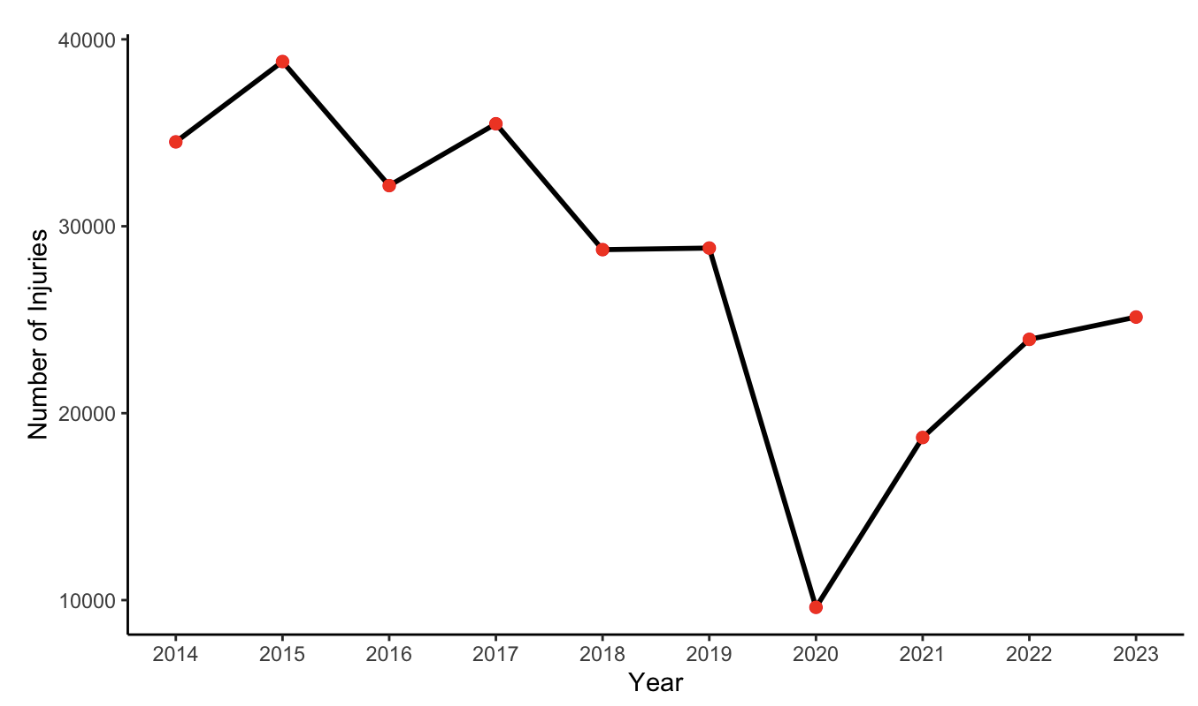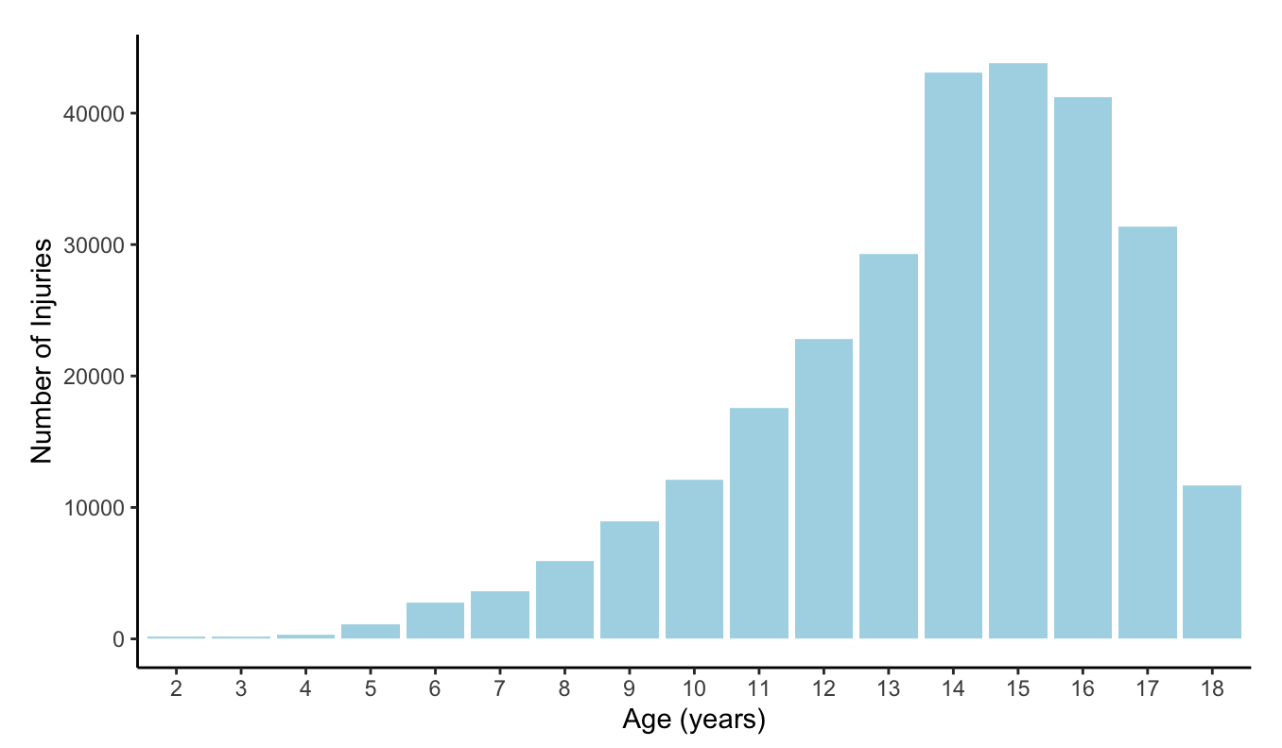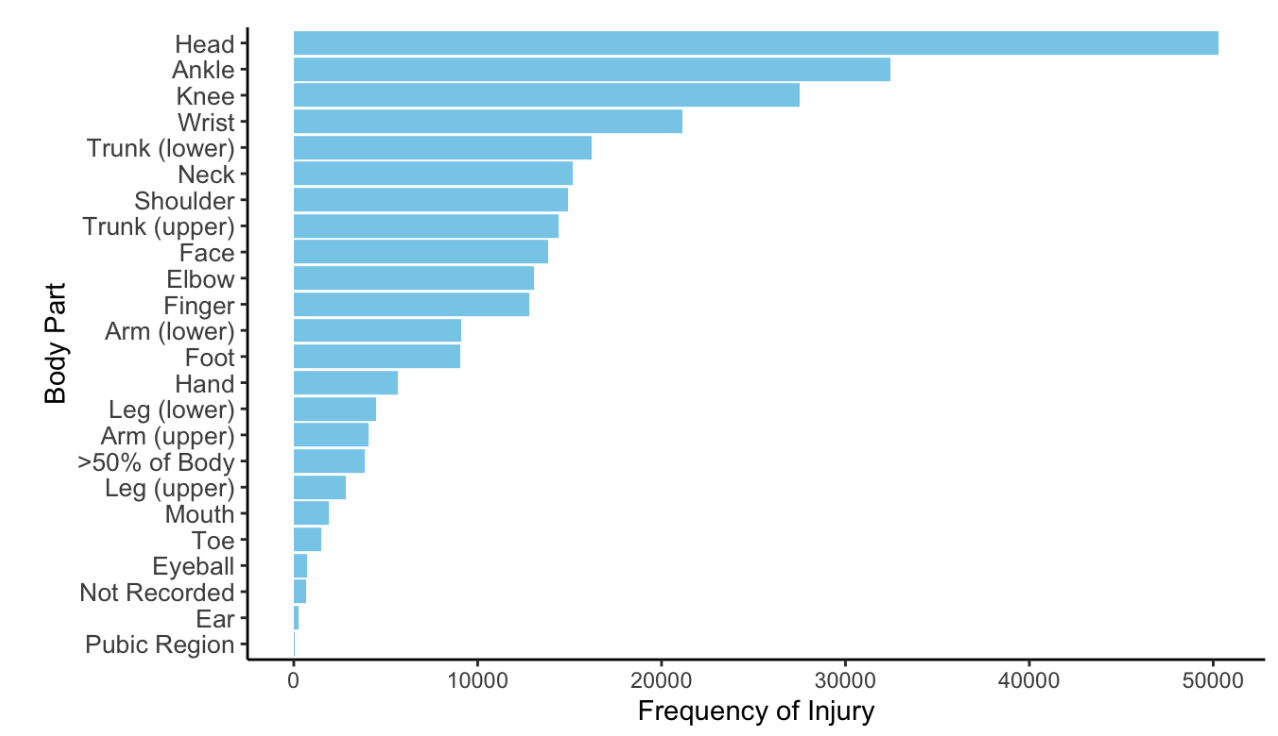Injury Prevention 1
Session: Injury Prevention 1
394 - A 10-year Review of Pediatric Cheerleading Injuries in the United States
Sunday, April 27, 2025
8:30am - 10:45am HST
Publication Number: 394.3856
Camila Vicioso, Icahn School of Medicine at Mount Sinai, NY, NY, United States; Charu Jain, Icahn School of Medicine at Mount Sinai, New York, NY, United States; Uma Balachandran, Icahn School of Medicine at Mount Sinai, New york, NY, United States; Sheena Ranade, Icahn School of Medicine at Mount Sinai, New York, NY, United States
.jpg)
Camila Vicioso, BA (she/her/hers)
Medical Student
Icahn School of Medicine at Mount Sinai
NY, New York, United States
Presenting Author(s)
Background: 3.5 million youth participate in cheerleading across scholastic and competitive platforms, performing increasingly intense routines that present new injury risks. In light of the popularity and demands of the sport, the American Academy of Pediatrics released an updated policy statement on cheerleading safety (Oct. 2024). The NCAA Division II and International Olympic Committee’s recent recognitions of cheerleading also suggest that the sport will continue to evolve, making the understanding of injury patterns critical. The most recent data on cheerleading injuries is outdated, from 2010-2019, requiring updated statistics to reflect the sport’s growth.
Objective: This study explores the frequency and characteristics of cheerleading injuries to inform considerations for physicians treating youth athletes.
Design/Methods: Youth (0-18 years) cheerleading injuries from Jan. 2014 to Dec. 2023 presenting to emergency departments (ED) were extracted from the National Electronic Injury Surveillance System. Sample weights for each ED reflect a national estimate (NE) of injuries across the US. Descriptive statistics and linear regression were applied on SPSS.
Results: A total of 8,108 (NE=275,967) pediatric cheerleading injuries were reported from 2014-2023 (Fig. 1). There was a significant decrease in injuries over this period (R²=0.49, P=0.02). The drop from 2019 (NE=28,833) to 2020 (NE=9,615), followed by a significant increase from 2020-2023 (R²=0.90, P=0.05), likely reflects reduced sport during the COVID-19 pandemic. Predominant injuries were sprains (NE=95,729), contusions (NE=30,655), and fractures (NE=30,345). The majority of injuries were in females (98%) and adolescents (46%, Fig. 2). 98% of patients were released from the ED, with < 2% requiring admission or transfer. Common injury sites included the head (NE=50,309), ankle (NE=32,428), knee (NE=27,501), and wrist (NE=21,152) (Fig. 3).
Conclusion(s): Cheerleading injuries presenting to EDs have decreased, perhaps due to improved safety measures in the sport. Nonetheless, as demands for the sport are expected to keep increasing, continuous injury reporting is needed, as well as adherence to safety guidelines. For instance, pre-participation physical evaluations may be beneficial, particularly for head injuries (i.e. concussion assessment). Further studies may consider the high injury rate in female adolescents and strategies to reduce injury, such as education on the female athlete triad for high school cheerleaders. Overall, this study highlights common injuries in youth cheerleaders, informing injury treatment and prevention strategies for the sport.
Figure 1. National Estimate of Cheerleading Injuries Per Year in the US
 Figure 1. Frequency of cheerleading injuries in the US from 2014-2023. 8,108 (NE=275,967) injuries were reported. There was a significant decrease in injuries over this period (R²=0.49, P=0.02). The drop from 2019 (NE=28,833) to 2020 (NE=9,615), followed by a significant increase from 2020-2023 (R²=0.90, P=0.05), likely reflects reduced sport during the COVID-19 pandemic.
Figure 1. Frequency of cheerleading injuries in the US from 2014-2023. 8,108 (NE=275,967) injuries were reported. There was a significant decrease in injuries over this period (R²=0.49, P=0.02). The drop from 2019 (NE=28,833) to 2020 (NE=9,615), followed by a significant increase from 2020-2023 (R²=0.90, P=0.05), likely reflects reduced sport during the COVID-19 pandemic.Figure 2. National Estimate of Cheerleading Injuries by Age
 Figure 2. Injuries were most common in the adolescent age group (ages 14-17 years old).
Figure 2. Injuries were most common in the adolescent age group (ages 14-17 years old).Figure 3. National Estimate of Cheerleading Injuries by Body Part
 Figure 3. The most common injuries were to the head (NE=50,309), ankle (NE=32,428), knee (NE=27,501), and wrist (NE=21,152).
Figure 3. The most common injuries were to the head (NE=50,309), ankle (NE=32,428), knee (NE=27,501), and wrist (NE=21,152).
